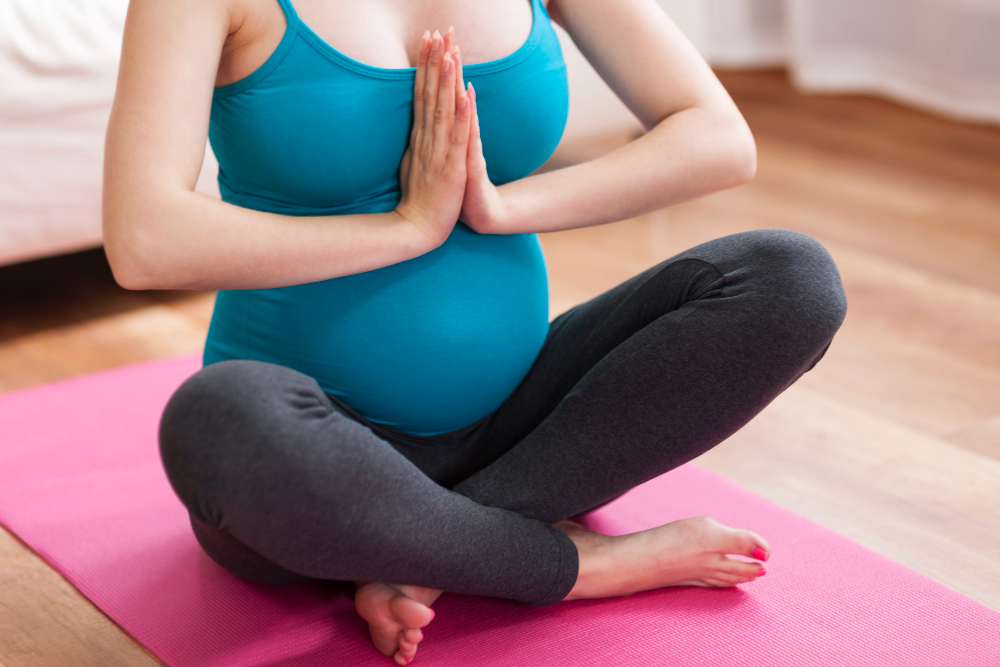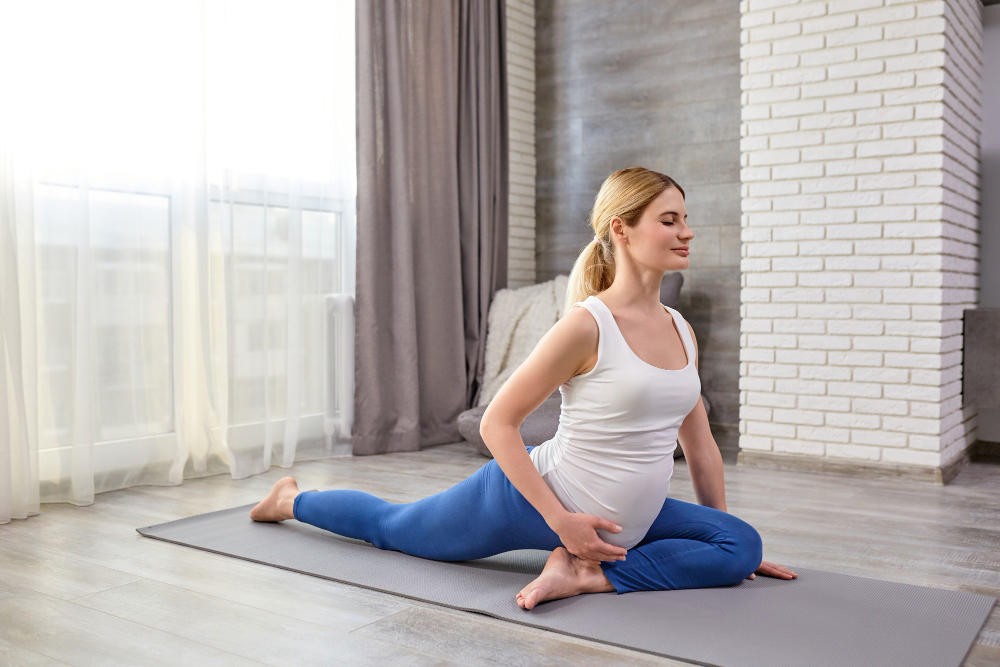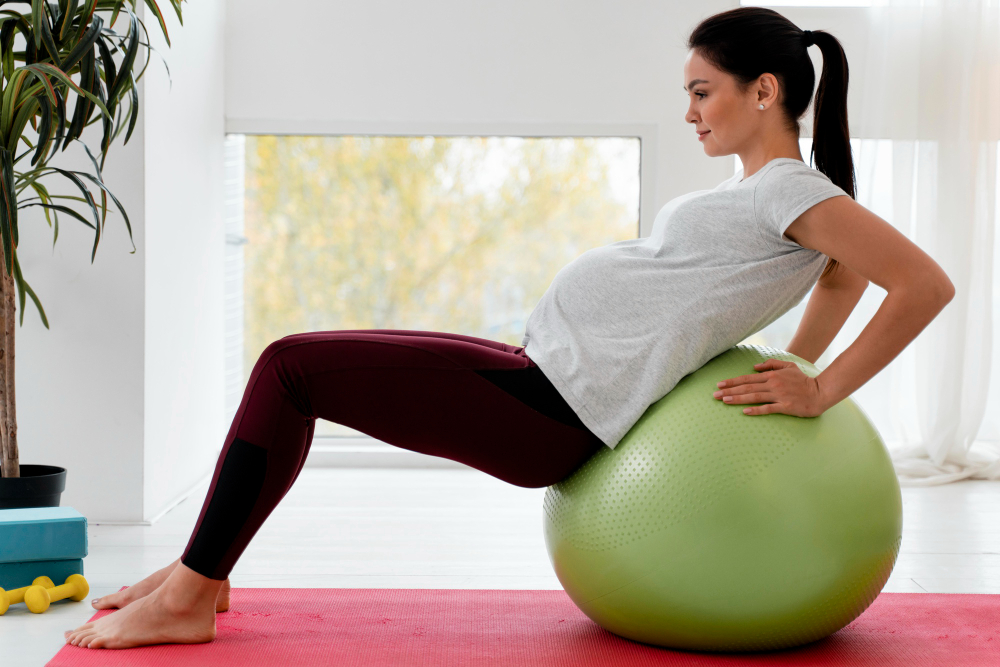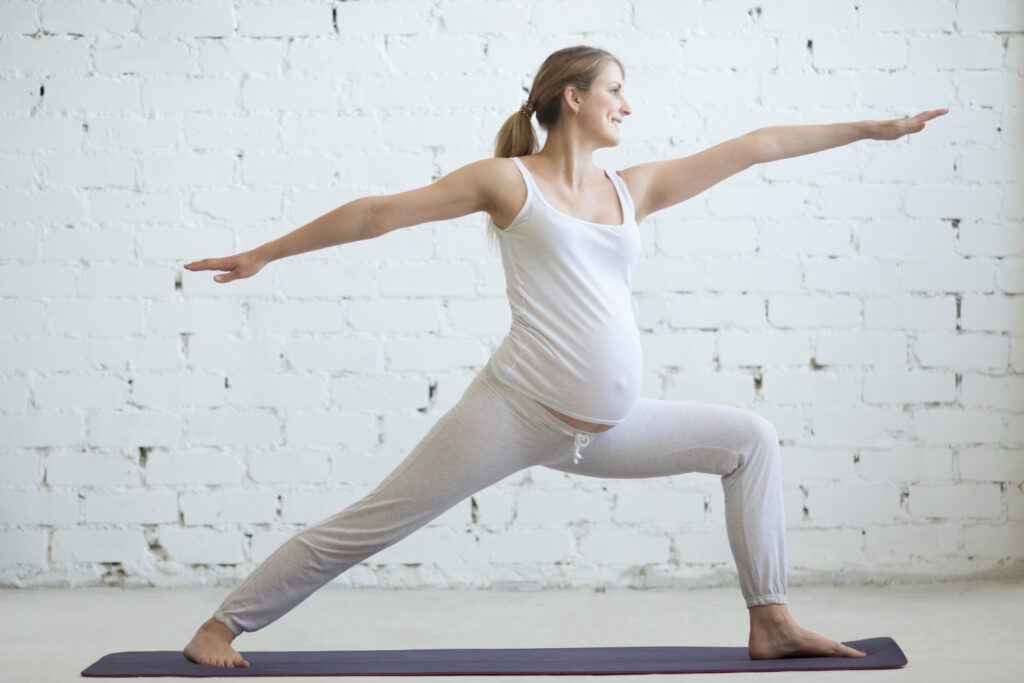During the pregnancy it is common to present discomfort of all kinds, due mainly to the hormonal, emotional and physical changes that your body experiences. Today from mamayoga we will show you prenatal yoga poses to relieve discomfort during pregnancy.
Discomfort during your pregnancy
You will have noticed that your pregnancy is synonymous with change. There are so many changes in you and not only on a physical level, but also emotional, at the level of family structures, routines, vision of the future, friendships, tribe, work, hours of sleep and even of feeding. Sometimes so much change overwhelms us.
We already explained to you in another article how yoga can help pregnant women feel stronger and more balanced. Let's now see why these physical changes can lead us to produce undesirable discomfort and what specific postures we can use to alleviate them.

As your pregnancy progresses with abdominal volume increase, the different bursts of hormones, the sleeping position and much more, more or less bearable discomfort will begin to appear that you should pay attention to. Each quarter has symptomatology and discomforts of their own, but also each pregnancy is a world, so some lucky ones will not go through any and others will win the lottery. The most common discomforts during pregnancy are the following.
- Sciatica. Due to a change in the position of the pelvis, the dreaded sciatica can occur, a stabbing pain that goes down from the buttock and can reach the big toe. The majority of pregnant women who suffer from it suffer from the so-called “false sciatica” that is caused by tension in the piriformis muscle of the buttock (and not by an injury to the vertebrae). So, with a good positioning of the pelvis, postural habits, physiotherapy sessions and the practice of some prenatal yoga postures it can be alleviated.
- Low back pain. Sitting or standing for many hours working during your pregnancy, combined with a tendency to carry the baby too far forward in bad posture, can cause lower back pain. Postural prevention, taking the necessary breaks and giving mobility to your body will help you with this symptom.
- Pubalgia. At the end of your pregnancy, or before, if you are carrying twins or it is your second, the placement of the baby will put pressure on the pubis, causing pubalgia pain. Massages, the movement of your pelvis and hips and some prenatal yoga postures will help you improve this symptom.
- Reflux, heartburn. The position of the baby in this case reducing the free space of the stomach, plus hormonal changes can give this reflux, heartburn, metallic taste, etc. You will need to regulate your diet, space, and postural changes to alleviate it.
- Short of breath. The change in volume of your abdominal area modifies the position of the diaphragm, giving us more of a feeling of shortness of breath. Above all, in the first pregnancy it usually happens that the baby is placed quite high up, pressing the viscera towards the diaphragm, and sometimes also its ninja kicks. Relaxing practices, rib opening, and mobility will help you find your space to breathe again.
- Dizziness. If you feel dizzy when lying on your back or getting up after sleeping, it is likely that you have accidentally put too much pressure on the inferior vena cava. To avoid them, you only need to always lie on the left side of the body or place a cushion on the right side so that your body does not close said vein.
prenatal yoga
As you have seen, just because discomfort is common or frequent in most pregnancies does not mean that we cannot do anything about them. The prenatal yoga practice, includes a series of postures that will help you relieve the annoying symptoms that may arise in the different trimesters.
Mobilizing your body, feeling active, compensating for bad postural habits and focusing are some of the benefits of prenatal yoga. Additionally, regular practice will help you establish healthy routines that promote hormonal regulation, better rest and more vitality for your daily life.

Below, we present some of the first aid kit positions so that your prenatal yoga practice can help you relieve symptoms Y inconvenience most common during pregnancy.
Prenatal yoga poses
Root yourself and breathe
The first prenatal yoga pose It is basic and simple, but it will help you get to know your body, position yourself better in space and thereby compensate, avoid or improve the back discomfort and sensations of lack of space or breathing.
Standing with your legs hip-width apart, feel your feet. Place one hand on a heart and the other on the baby, the baby. Rotate your pelvis back and forth on your legs, bringing the tailbone from behind and above to front and inside, several times. Find the neutral point, where your pelvis effortlessly supports the baby, pointing the pubis and tailbone toward the floor. Tilt your body weight toward the tips of toes without lifting them and from there take the weight to the heels also without lifting the feet. Repeat the swing several times and again find the center where there is balance and your feet are firmly planted on the ground.
Feel like you can make room for the baby by thinking about your legs becoming rooted. As if your feet entered the earth. In one inhalation raise your arms by the sides towards the sky filling you with air. As you exhale, move your hands with a caress over the face, neck, and chest until you reach the baby. Repeat several times and return to the position of one hand on the heart and the other on the baby.
The pigeon pose
The next prenatal yoga posture, ideal for relieving discomfort, is the pigeon wave iguana. This position compensates lumbar curvature, producing a soft extension, it also relieves the discomfort of sciatica due to the compression and stretching of the gluteus.

Starting from the position of quadruped, on knees, hands and tips of toes; Bring your left knee forward on the floor between your hands until you sit on it and stretch your right leg backwards on the floor. You can open your left knee a little to the side to have more space for the baby, especially if you are already in the third trimester. Hands on the floor with arms stretched and shoulders lowered to open your chest and breathe calmly.
You will feel a pressure point in your lumbar, but there should be no pain, but rather modify your posture by bringing your hands further forward. After some breaths, lean forward resting your head on your fists, one on top of the other, so you have room to breathe. Hold for a few breaths and come out slowly, raising your head and resting your hands again to return to the standing position. quadruped. Repeat with the right leg forward.
Feet and legs on the wall
In case of pain pubalgia, but also to relieve swollen feet, tired legs and exhaustion by heat; You can use this gentle inverted posture variant.
put your mat touching the wall, perpendicularly so you can rest your legs on the wall and have your back on the mat. The easiest way to get into the pose is to sit sideways on the wall, rest one elbow and raise your legs sideways until you can have your buttocks close to the wall, both legs straight and your back long on the floor.
If you feel dizzy lying on your back, put a flat cushion on the right buttock. If you have Reflux either acidity, put the cushion on your head so that it rises a little from the ground.
Support the soles of your feet on the wall and lift yourself up with the strength of your legs, taking the baby towards the ceiling with the support of your feet on the wall and your elbows on the floor. Slowly lower vertebra by vertebra, repeat several times. Stay in the position with your back to the floor and legs stretched out on the wall.
The exercise ball – fitball
In the group of prenatal yoga poses that will help you relieve discomfort quarter by quarter, you can do all the exercises on the ball, exercise ball either fitball.
Your pelvis, your hips, your ribs, your spine, your legs, your arms and in short your entire body during your pregnancy needs mobility. Waves and more waves to release tension and reposition your body. If this movement is necessary during your pregnancy during childbirth, madness is going to break loose.
The exercise ball It is a great tool for your prenatal yoga poses to have. mobility, travel and find relief.

You can start with simple exercises like sitting on top of the very swollen ball, so that your feet reach the ground, but your groin is open with your knees below your hips. From there imagination to power, do circles with the ball, with the chest, stretches or lengthens arms, turns, jumps. Everything will benefit you.
Breathe in the baby in the baby
Finally, for relieve and recover shortness of breath you can perform pranayama either breathing conscious, such as breathing in the baby, the baby.
Sitting cross-legged or on a stool or meditation cushion. Bring one hand to your heart and the other to the baby, the baby. To the inhale You do it through your nose by feeling or imagining that your ribs expand to the sides. When exhaling breathe out through your mouth warming it, with an “ahhhhh” sound and taking it towards the floor as if you wanted this sound to go down to the baby, the baby. Continue the exercise for 2 or 3 minutes. When closing, remain in meditation feeling your hands in contact with the skin.
You have already seen how prenatal yoga poses They help you with the discomfort that is generated in your pregnancy. I just have to invite you to our face-to-face classes Y on-line where you will find all these postures and much more in the experience mamayoga.




